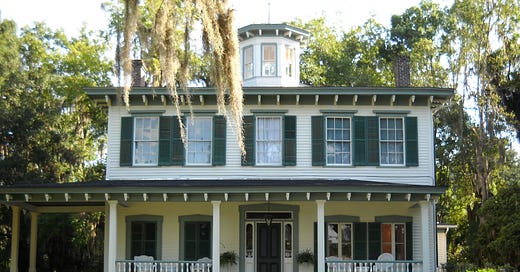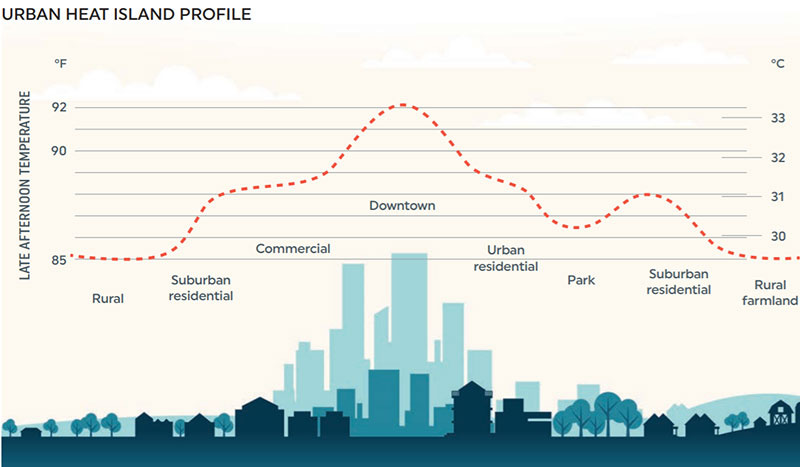Climate solutions // I S S U E # 5 9 // E X T R E M E H E A T
The impossible heat wave
This summer, Dr. Kyle Merritt did something he never thought he would do: he wrote “climate change” on a patient’s chart before admitting her to the hospital. A woman in her 70s had entered his clinic in the midst of British Columbia’s latest heatwave, known as a heat dome. Temperatures as high as 121°F (49°C) roasted the Canadian province. During a single day in June, nearly 10 people were dying per hour.
Merritt’s patient was nearly one of them. The woman entered the clinic suffering from congestive heart failure and diabetes, exacerbated by the unrelenting heat. Sending her back to an overheated home might be lethal. “If you can say we think that heat dome was directly related to climate change and those temperatures, certainly we could see the direct impact,” said Merritt. “I think it’s reasonable to think as physicians we need to think what are the underlying causes that bring people in to see us.”
That heatwave would have been “virtually impossible” except for climate change, report 27 climate scientists in a recent attribution study (pre-peer review). Even more disturbing were their predictions for the future. A heatwave like that one was expected once every 1,000 years before global warming. In a 2 °C world (just 0.8 °C warmer than today), a heatwave of this intensity is expected to occur every five to 10 years.
With a much hotter world coming, how will we adapt. That’s what Dana Smith writes for us this week. Many cultures have faced similar problems before. We’ve forgotten, or ignored, many of the lessons built into the homes and buildings of everyone, from Iraqis to Floridians.
I was born in Florida. Growing up in the 1980s, I remember the response to summer heat: blasting air conditioning into poorly insulated stucco and glass homes. But I also remember walking into one old Florida home, a rambling wooden structure framed by high ceilings, shaded porches, tall windows, and a cupola on the roof. It seemed cooled by nothing more than the breeze off the river, like magic. Turns out, it wasn’t. Large windows supply cross-ventilation. Porches deflected direct sunlight off the walls. Convection drew hot air out of the house, through the roof, cooling the ground floor.
It was another way of thinking about an old problem. We’ll need to rediscover that approach. Thanks for joining us for another issue of Hothouse.
Mike Coren
Want to chat? You can reach me anytime at mj@hothouse.solutions, Twitter, or schedule a time to chat here.
Or give us a share. Thanks!
POLL RESULTS: What's your favorite way to beat the heat?
What’s Old Is New Again
By Dana Smith
On the outskirts of Jaipur, an ancient Indian city of pink sandstone, sits a modern campus built of stone, steel, glass, and concrete. While the materials are new, the architecture that houses the Pearl Academy of Fashion, completed in 2008, is inspired by the region’s Indo-Islamic design.
A latticed façade, or jaali, shields the building from the desert sun, casting dark shadows across the stone surface. While it appears merely decorative, the size and orientation of the cutouts, which stand four feet away from the building, have been deliberately calculated to offer shade and cool the structure.
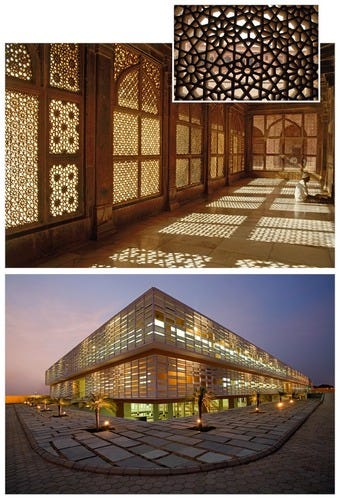
A stepwell, a giant pool of water dug into the ground, sits at the heart of the building’s courtyard. The stepwell’s design dates back to the 3rd century when it was used as a reservoir or public bath. Today, it works as an air conditioner in the arid climate, cooling the surrounding area as the water evaporates. (The pool is replenished by recycled rain and treated wastewater).
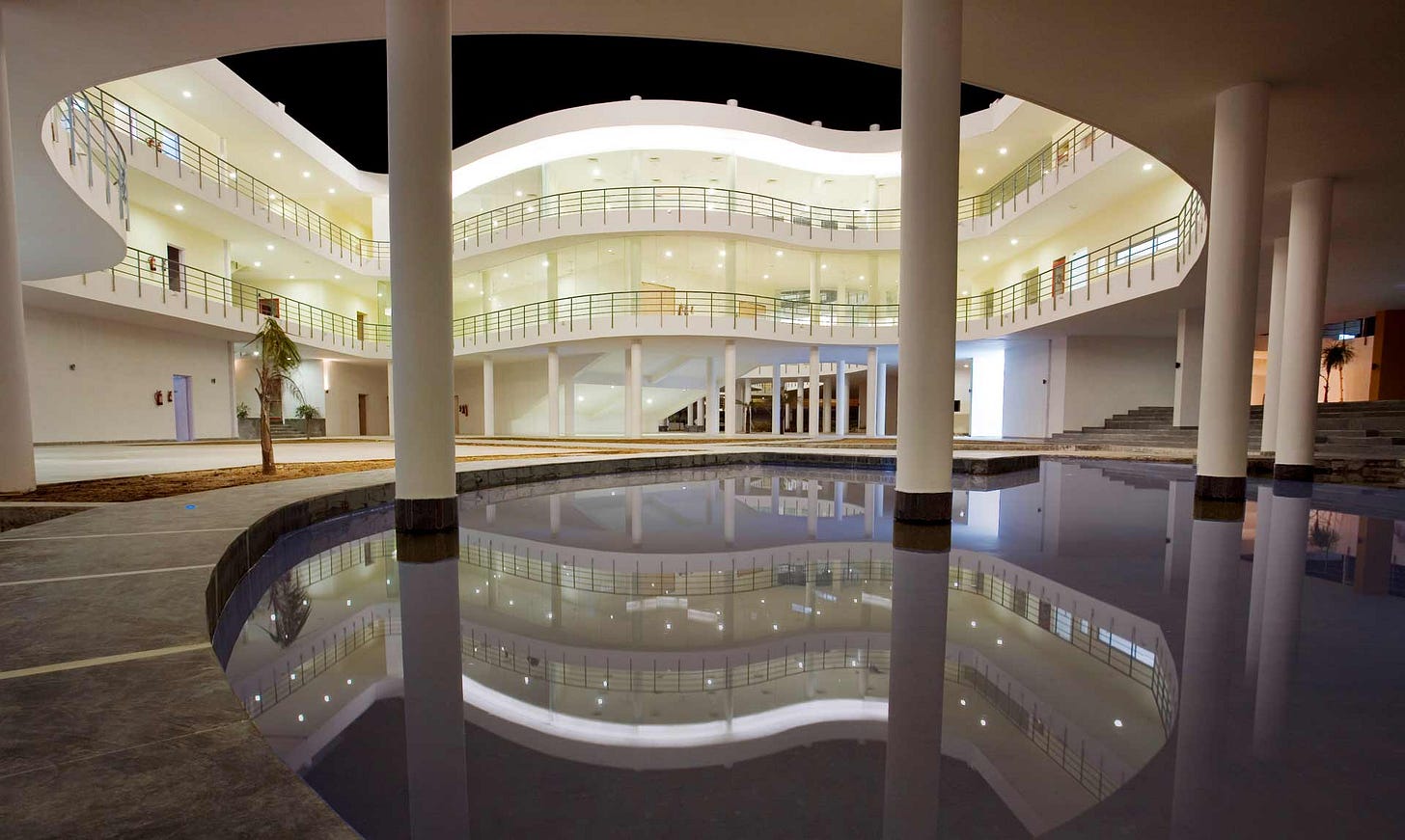
Taken together, these traditional Rajasthani architectural features keep the school’s internal temperature 30°F cooler than the hundred-degree heat outside—without a drop of fossil energy.
Jaipur is home to roughly 4 million people, and it, like virtually every other city in the world, is hotter than its rural or natural surroundings—a phenomenon known as the urban heat island effect.
Urban temperatures are climbing, fast. From 1983 to 2016, extreme heat rose by nearly 200% in more than 13,000 cities, according to recent research published in the Proceedings of the National Academy of Sciences. This increase, which affected 1.7 billion people, is thanks to a combination of climate change, urban migration patterns, and the excess heat produced by cities themselves.
To adapt, architects and urban planners are embracing passive cooling measures—shade, water evaporation, wind convection, and natural materials—rather than relying on burning fossil fuels to cool the air. Yet what works well for a building like the Pearl Academy of Fashion is proving trickier across entire cities.
Urban heat islands
The urban heat island effect is driven by both the materials that are present in cities and the ones that are absent. The concrete and asphalt that make up most buildings, roads, and sidewalks store and amplify heat from the sun. Many of the structures, especially roads and roofs, are painted black, which absorbs more heat than lighter colors. Even the geometry of cities traps heat by blocking wind movement that would otherwise cool the area. Without trees to shade the structures and cool the local environment by transpiring water, temperatures rise even higher.
Almost everything about the modern city flies in the face of traditional architecture’s approach to heat, says Vivek Shandas, a professor of climate adaptation at Portland State University. “There've been traditional societies that have worked with the movement of the wind, movement of the waters, atmospheric conditions of all kinds, and meteorology to really design developments to be able to withstand and cope with extreme heat,” he says. “What we've done in the last 150 to 200 years is design a society that amplifies heat.”
Ancient structures were built out of natural, porous materials, such as adobe and wood, that dissipated heat relatively quickly, especially at night when temperatures dropped. Their lighter colors reflected the sun’s rays, casting heat back into the atmosphere. Modern man-made materials, such as concrete, do the opposite.
Traditional designs also worked with the wind to cool cities. Early human settlements were often built alongside waterways that provided access to the water and channeled the cool breezes blowing across them. Today, large barriers such as factories along rivers and bays impede this airflow.
Finally, early city planners cultivated, rather than cleared vegetation. Trees are champions of urban temperature control. Their shade prevents the ground below from absorbing heat from the sun, and they release water into the atmosphere through transpiration, cooling the surroundings. We’ve built cities that often elevate industry, retail, and housing over green space.
Faced with the failure of our cities’ approaches to heat, architects and urban planners are returning to these ancient design principles to cool buildings and cities as our ancestors did.
Cooling when you can’t rebuild a city
New construction, such as the Pearl Academy of Fashion, embraces these principles to passively cool modern buildings. But since building entirely new cities or leveling factories and reconstructing them to harness wind convection isn’t realistic, urban planners are adopting a piecemeal strategy to combat the heat island effect however they can.
One of the most popular tactics is regreening the urban core. That includes everything from planting trees for shade canopies to installing roof-top gardens. These interventions work: they can cool neighborhoods by more than 20°F. But not everywhere has that luxury.
In the desert, water to keep green space alive is scarce. So southwestern cities in states like Arizona and California are exploring alternative strategies. In 2017, the city of Los Angeles started experimenting with a special paint called CoolSeal that lightens roads and reflects the heat of the sun. In theory, this type of coating could cool a city by as much as 10°F by changing streets to reflect the sun’s radiation rather than absorb it throughout the day.
In reality, the paint did reflect light—but the rays were absorbed by the surrounding objects, including people. Researchers at UCLA and Arizona State University found that while street surface temperatures fell, people in the area actually experienced 7°F hotter temperatures. The problem is that these initiatives don’t really get rid of the heat, as the Los Angeles study revealed, they just displace it to their surroundings.
Rethinking the future
Realistically, cities can’t plant or paint their way out of the urban heat problem. To truly combat the urban heat island effect we’d need to change not just individual streets or sidewalks or buildings, but entire city layouts. While we can’t do that overnight, we can decide how they should grow and evolve in the future.
Ladd Keith, an assistant professor of planning and sustainable built environments at the University of Arizona, says that one of the most important things cities can do to combat global warming is “regulating future land use.” That may sound like a dry zoning meeting, but it means swapping out heat-absorbing roads, parking lots, and fossil fuel-burning cars for future city designs that combine the best of ancient ideas and modern design. It means protecting existing green space and advocating for new parks and urban forests.
In combination, these actions can start to have real, impactful change. That includes steps individual homeowners can take to help reduce their city’s carbon footprint, even if that’s still a fraction of what’s needed.
We’ll explore those next week.
Like what you’re reading? Share Hothouse with a friend (or many)!
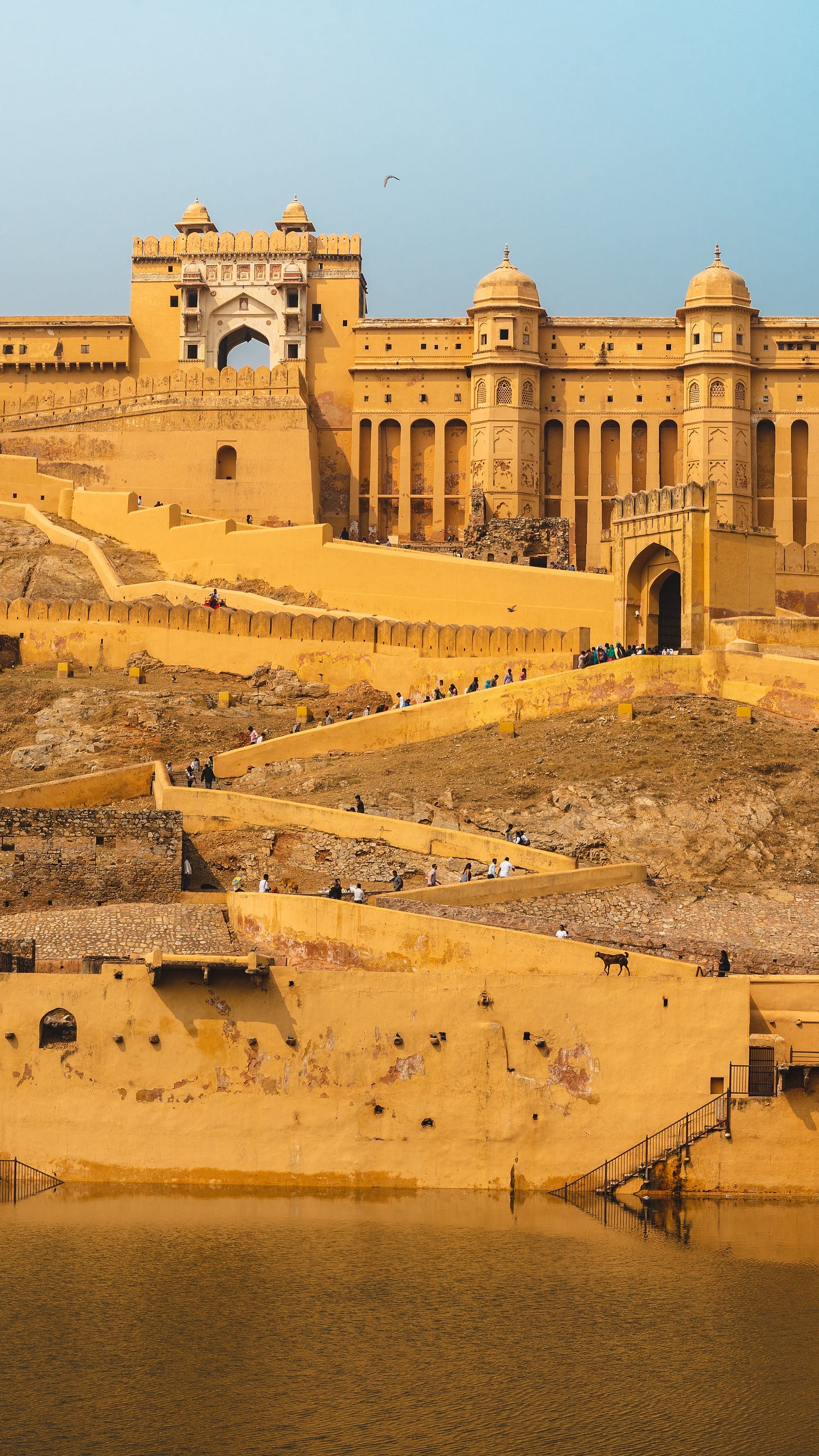
Hothouse is a weekly climate action newsletter written and edited by Mike Coren and Cadence Bambenek. We rely on readers to support us, and everything we publish is free to read.

